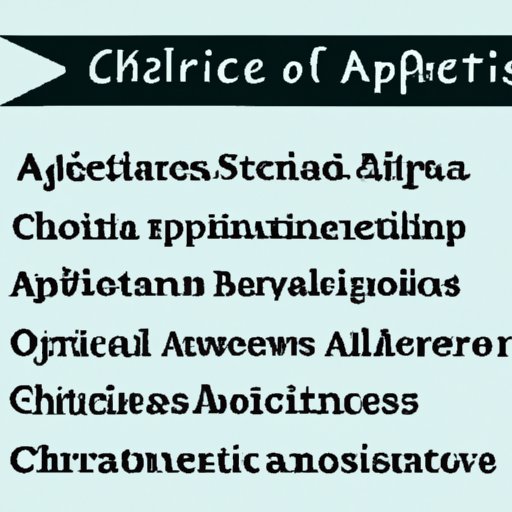
Introduction
Citing sources is an essential component of academic writing. But with so many citation styles and rules to follow, the process can be overwhelming. Failing to properly cite sources can result in plagiarism, which can have serious consequences. In this article, we’ll provide you with a comprehensive guide to citing sources in academic writing. We’ll go over the basics of citation, highlight the importance of avoiding plagiarism, discuss common citation styles, and provide expert tips for perfect citations.
The Definitive Guide to Citing Sources in Academic Writing
Citation is the act of acknowledging someone else’s work in your own writing. The purpose of citation is twofold: to give credit to the original author and to allow readers to locate and verify the information you’ve used in your work. Without proper citation, you run the risk of plagiarizing, whether intentionally or unintentionally.
The Importance of Citing Sources and Avoiding Plagiarism
Plagiarism is a serious offense in academia and can result in a loss of academic integrity and reputation. It occurs when you use someone else’s work without proper attribution or permission, even if you didn’t intend to do so. The consequences of plagiarism can range from a failing grade to legal action.
When you properly cite your sources, it demonstrates your credibility and commitment to ethical scholarship. It also adds weight to your argument by showing that you’ve taken the time to research and engage with the relevant literature.
In-Text Citations vs Reference Lists
There are two main types of citation: in-text citations and reference lists. In-text citations are brief references to the source material within the body of your paper. They usually include the author’s last name and the publication year and are enclosed in parentheses. In-text citations allow readers to quickly see the source of the information you’re using.
Reference lists, on the other hand, provide a complete list of sources used in your paper. They are typically located at the end of your document and include the author, title, publisher, publication date, and any other relevant information. Reference lists provide readers with a more detailed look at the sources you’ve used and allow them to locate and verify them.
5 Simple Steps to Perfectly Cite Your Sources in a Research Paper
Citing sources doesn’t have to be complicated. Follow these five simple steps to create perfect citations in your research paper:
Step 1: Choose the Appropriate Citation Style
Different academic disciplines use different citation styles. The most commonly used citation styles are APA, MLA, and Chicago. Before you start writing, find out which citation style your professor or academic journal requires and become familiar with its rules.
Step 2: Identify the Source and Gather the Necessary Information
Once you’ve chosen a citation style, identify the source you want to cite and gather all necessary information, including the author’s name, publication date, title, and publisher. If you’re citing a website or online resource, make sure to include the date of access and the URL.
Step 3: Format the In-Text Citation
In-text citations should be formatted according to the rules of your chosen citation style. They usually consist of the author’s last name and the publication year and are enclosed in parentheses. If you’re citing a specific page, include the page number after the publication year.
Step 4: Create a Works Cited or Reference List
At the end of your paper, create a works cited or reference list. This should include all sources referenced in your paper and follow the rules of your chosen citation style. Make sure to double-check your formatting and alphabetize your sources.
Step 5: Review and Revise Your Citations
Before submitting your paper, review and revise your citations for accuracy and consistency. Make sure they follow the rules of your chosen citation style and that you’ve included all necessary information.
Why Citing Sources is Important and How to Do it Effectively
Properly citing your sources not only demonstrates your commitment to ethical scholarship but also helps you incorporate outside information into your work more effectively. Here are a few tips for citing sources effectively:
Incorporating Sources Smoothly and Effectively into Your Writing
To incorporate sources smoothly and effectively into your writing, try using signal phrases and paraphrasing. A signal phrase introduces the source material and allows readers to understand where it came from. Paraphrasing involves restating the source material in your own words, which can help you integrate it more seamlessly into your own writing.
The Consequences of Failing to Cite Sources
Failing to properly cite your sources can have serious consequences. Aside from the moral and ethical implications of plagiarism, there can be academic, legal, and professional repercussions. Make sure to always cite your sources accurately and ethically.
The Dos and Don’ts of Citing Sources in Your Writing
To help you avoid common mistakes and citation pitfalls, here are a few dos and don’ts of citing sources in your writing:
Do Use Best Practices for Citing Sources
When citing sources, make sure to always follow the rules and guidelines of your chosen citation style. Use signal phrases and paraphrasing to integrate sources smoothly into your writing and double-check your formatting before submitting.
Don’t Overuse Direct Quotes
While direct quotes can be helpful, don’t overuse them. Instead, try to paraphrase or summarize the source material in your own words. This demonstrates your understanding of the information and allows you to integrate it more seamlessly into your own writing.
APA vs MLA: Understanding Citation Styles and How to Use Them
APA and MLA are two of the most commonly used citation styles in academic writing. Here’s a brief overview of the differences between the two, along with when to use each:
APA
APA style is most commonly used in the social sciences and is characterized by in-text citations that include the author’s last name and the publication year. APA style also requires a reference list at the end of the paper that includes all sources cited.
MLA
MLA style is most commonly used in the humanities and is characterized by in-text citations that include the author’s last name and the page number. MLA style also requires a works cited page at the end of the paper that includes all sources cited.
Avoiding Plagiarism: Tips for Citing Sources in Your Work
Plagiarism is a serious offense in academic writing. To avoid unintentional plagiarism, use these tips for citing sources in your work:
Use Multiple Sources
Using multiple sources can help you avoid unintentional plagiarism by allowing you to compare and contrast information from different sources and incorporate them into your own work in a more original way.
Avoid Copying and Pasting
Copying and pasting information from a source without proper attribution is a form of plagiarism. To avoid this, always double-check your sources and make sure to properly cite any information you use.

How to Cite Sources Like a Pro: Expert Advice for Writers and Researchers
To help take your citation skills to the next level, here are a few additional tips and tricks from expert writers and researchers:
Stay Up-to-Date with Citation Practices
Citation styles and rules can change over time. To stay up-to-date with current citation practices, check with your academic institution, read current style guides, and take advantage of online resources and tutorials.
Ask for Help When Needed
Citing sources can be challenging, but you’re not alone. If you’re unsure about how to cite a source or need help with a citation style, don’t hesitate to ask your professor or a writing center for assistance.
Conclusion
Citing sources is an essential component of academic writing. By properly citing your sources, you can demonstrate your commitment to ethical scholarship, add weight to your argument, and avoid plagiarism. By following the tips and advice provided in this guide, you can create perfect citations in your next research paper and improve your overall citation skills.





